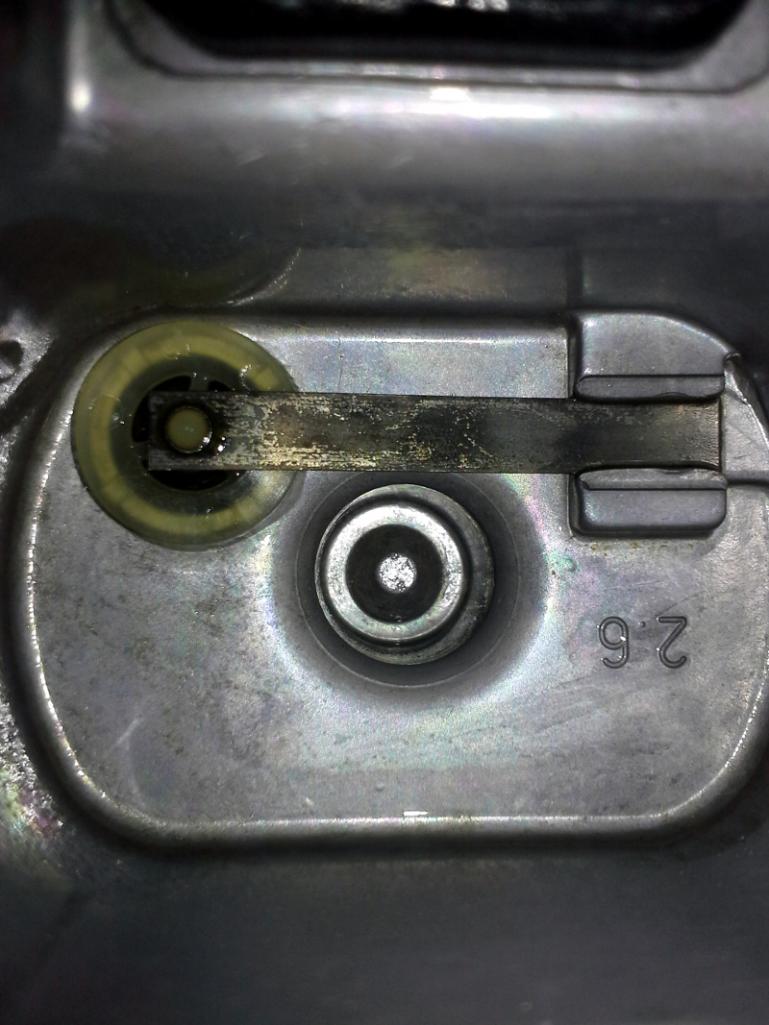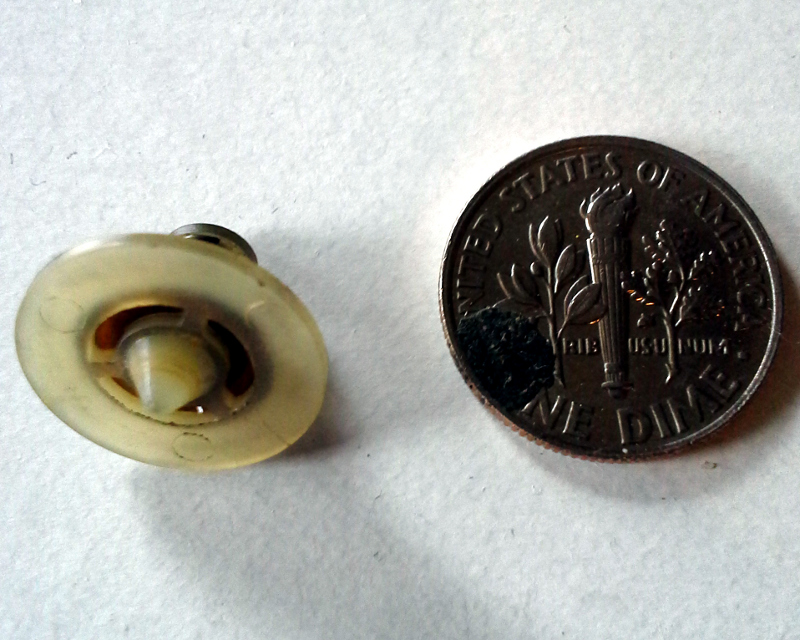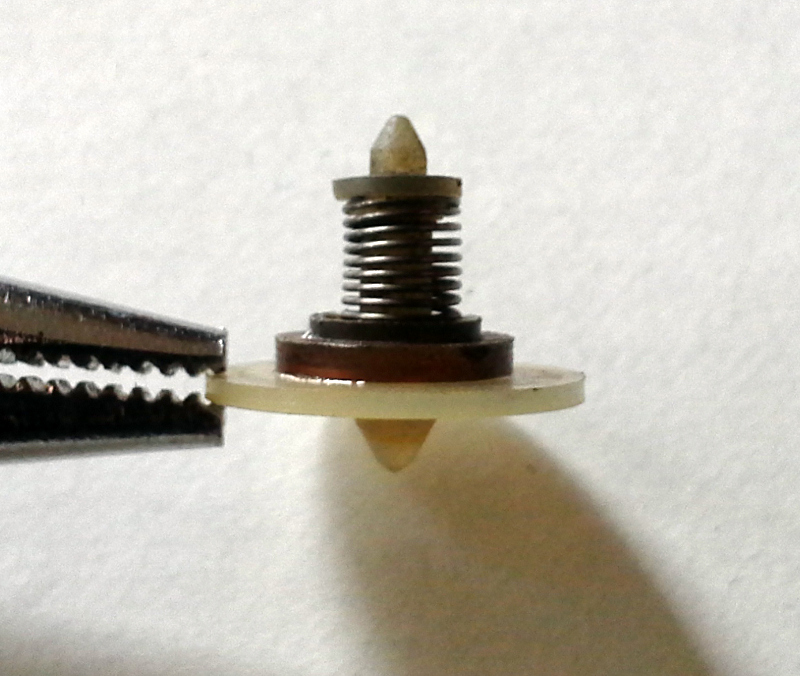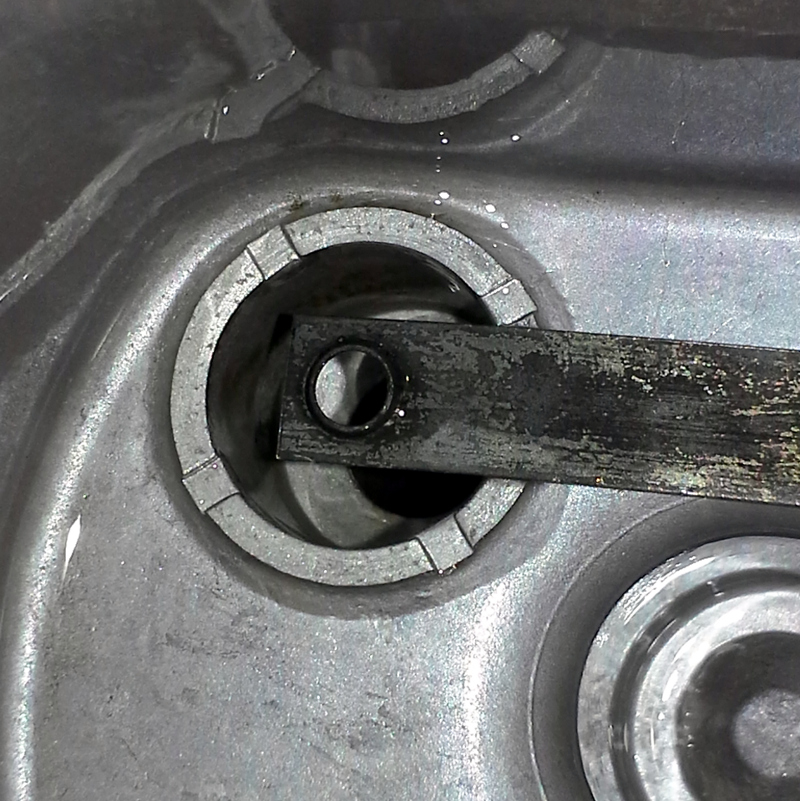|
|

|
Porsche, and the Porsche crest are registered trademarks of Dr. Ing. h.c. F. Porsche AG.
This site is not affiliated with Porsche in any way. Its only purpose is to provide an online forum for car enthusiasts. All other trademarks are property of their respective owners. |
|
|
  |
| r3dplanet |
 Mar 2 2013, 10:03 PM Mar 2 2013, 10:03 PM
Post
#1
|
|
Senior Member    Group: Members Posts: 679 Joined: 3-September 05 From: Portland, Oregon Member No.: 4,741 Region Association: None |
So I'm finally getting around to installing the Tangerine Racing manifold pressure sensor diaphragm kit through my MPS because it's Saturday and I'm sick and left with a whole free day to myself.
The process went smooth thanks to patience, an ultrasonic cleaner, more patience, and the ever-helpful pbanders D-Jet website. I know that I'm supposed to be able to suck and hold vacuum at the port. But the boxful of MPS units I have all suffer from an inability to hold vacuum. I split open the best one I had, de-soldered the connector, and pulled out the core unit. Up against the inside of the case, there is a small flat strip that acts as a spring holding down a small circular seal against the vacuum port opening. It's clear that this seal is made of some sort of plastic that is dried and warped with age. Here's a photo:  The seal won't hold air, water, or muster simply because it's old. I'm wondering what others may have done to correct this failure. Anyone? Thanks, Marcus |
| wingnut86 |
 Mar 2 2013, 10:56 PM Mar 2 2013, 10:56 PM
Post
#2
|
|
...boola la boo boola boo...    Group: Members Posts: 1,053 Joined: 22-April 10 From: South Carolina Member No.: 11,645 Region Association: South East States |
If you can take a close-up of the seat that the seal sits against that may help with brainstorming. Is the plug silicone or hard material? If silicone, I've used plaster of paris to create duplicate one off molds for items similar to this, and then filled the molds with silicone sealer (clear) and let cure overnight. This might require the heavier black RTV for creating gaskets, but it is a real mess to work with and stinks while curing over time - the off-gassing of Dyno based adhesives, etc... it would have to fully cure before sealing it, or it might have a corrosive effect. Our Chem engineers could comment here...
|
| r3dplanet |
 Mar 3 2013, 12:50 PM Mar 3 2013, 12:50 PM
Post
#3
|
|
Senior Member    Group: Members Posts: 679 Joined: 3-September 05 From: Portland, Oregon Member No.: 4,741 Region Association: None |
Here are a couple more pictures. The more I look at it, the more I don't know what it does. The spring does not compress or expand. The three circular sandwich layers from the bottom are what look to be nylon topped with hard rubber, and then finally a small black rubber layer from which the spring protrudes.
At this point I don't even know what I'm doing in here so I'll clean it carefully and put it back into place.   |
| r3dplanet |
 Mar 3 2013, 01:40 PM Mar 3 2013, 01:40 PM
Post
#4
|
|
Senior Member    Group: Members Posts: 679 Joined: 3-September 05 From: Portland, Oregon Member No.: 4,741 Region Association: None |
Having carefully cleaned everything up, I noticed that the circular area where this small part goes has four small notches placed every 90 degrees.
It's clear that this little plunger isn't designed to make a seal at all, or at least not a perfect one. With the flat nylon round making perfect contact, it still allows air to pass through these four little grooves.  So now I'm just left wondering what this actually does. I must say that I'm totally fascinated. Anyway, there's clearly nothing wrong with it now that it's all cleaned up and I can see more clearly. Thanks, Marcus |
| JeffBowlsby |
 Mar 3 2013, 03:49 PM Mar 3 2013, 03:49 PM
Post
#5
|
|
914 Wiring Harnesses      Group: Members Posts: 8,510 Joined: 7-January 03 From: San Ramon CA Member No.: 104 Region Association: None 
|
Oh that...
"You can see that the input port is covered by a round plate with a small opening that is retained by a leaf spring. This innocent-looking device serves a very important purpose in the MPS. The small hole is a throttle opening, designed to prevent small fluctuations in the manifold vacuum from changing the average vacuum level sensed by the MPS. Despite the common belief that the MPS is responsible for poor performance of D-Jet engines that have been modified by high lift/duration cams due to overlap vacuum fluctuations, the throttle opening prevents this from being a problem - the poor performance is due to the cam affecting the volumetric efficiency curve shape, which the ECU manages. See my ECU document for more details. When the throttle plate is opened, causing a large change in the manifold vacuum, the large flow of air causes the leaf spring to bend, opening the plate and permitting the MPS to accurately track throttle input." |
| ChrisFoley |
 Mar 3 2013, 05:10 PM Mar 3 2013, 05:10 PM
Post
#6
|
|
I am Tangerine Racing      Group: Members Posts: 7,925 Joined: 29-January 03 From: Bolton, CT Member No.: 209 Region Association: None 
|
BTW,
I now have written instructions for diaphragm replacement, available as a PDF file to anyone who already purchased the kit. Just send me an email request. |
  |
1 User(s) are reading this topic (1 Guests and 0 Anonymous Users)
0 Members:

|
Lo-Fi Version | Time is now: 17th May 2024 - 06:37 PM |
Invision Power Board
v9.1.4 © 2024 IPS, Inc.








